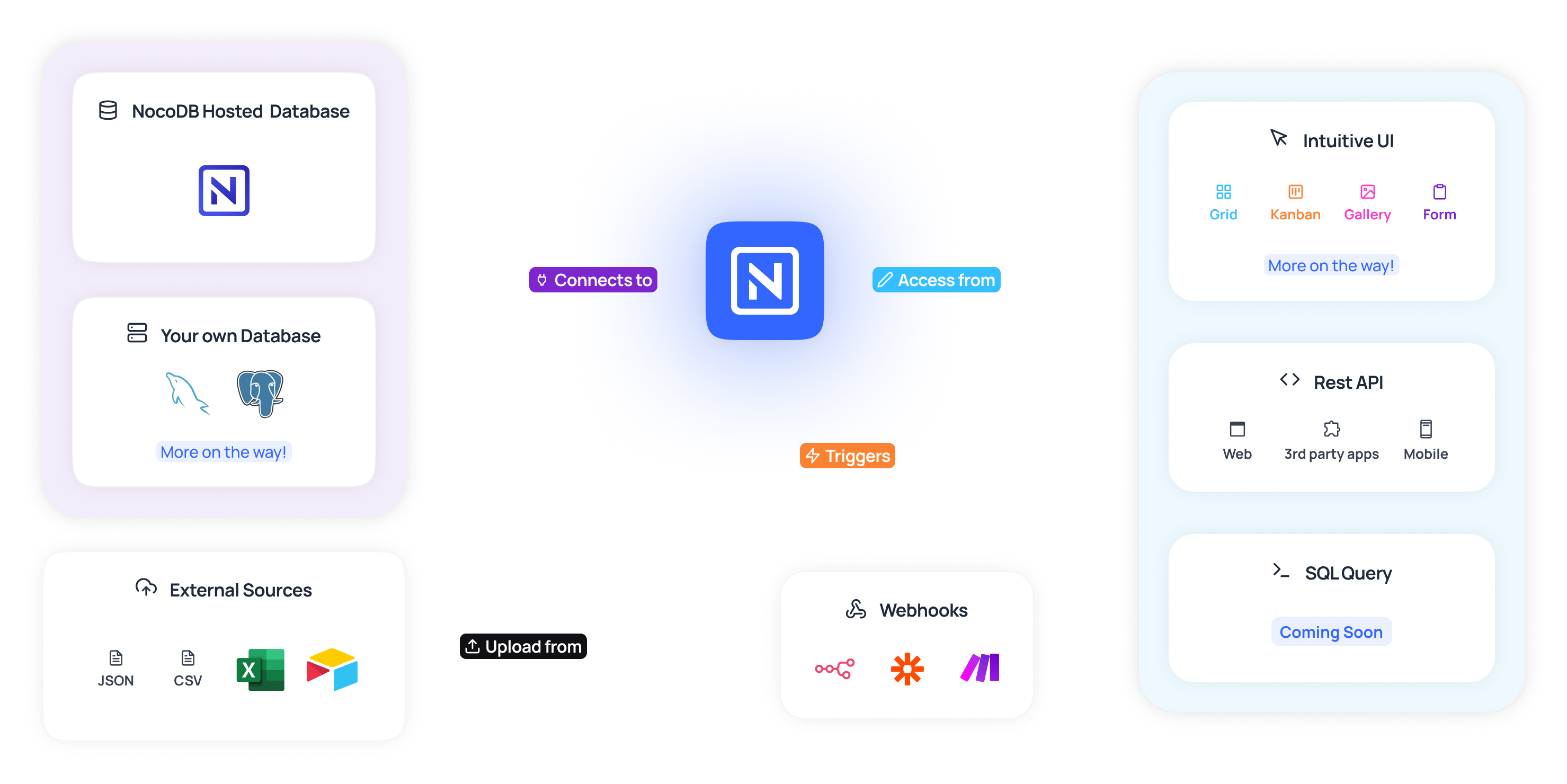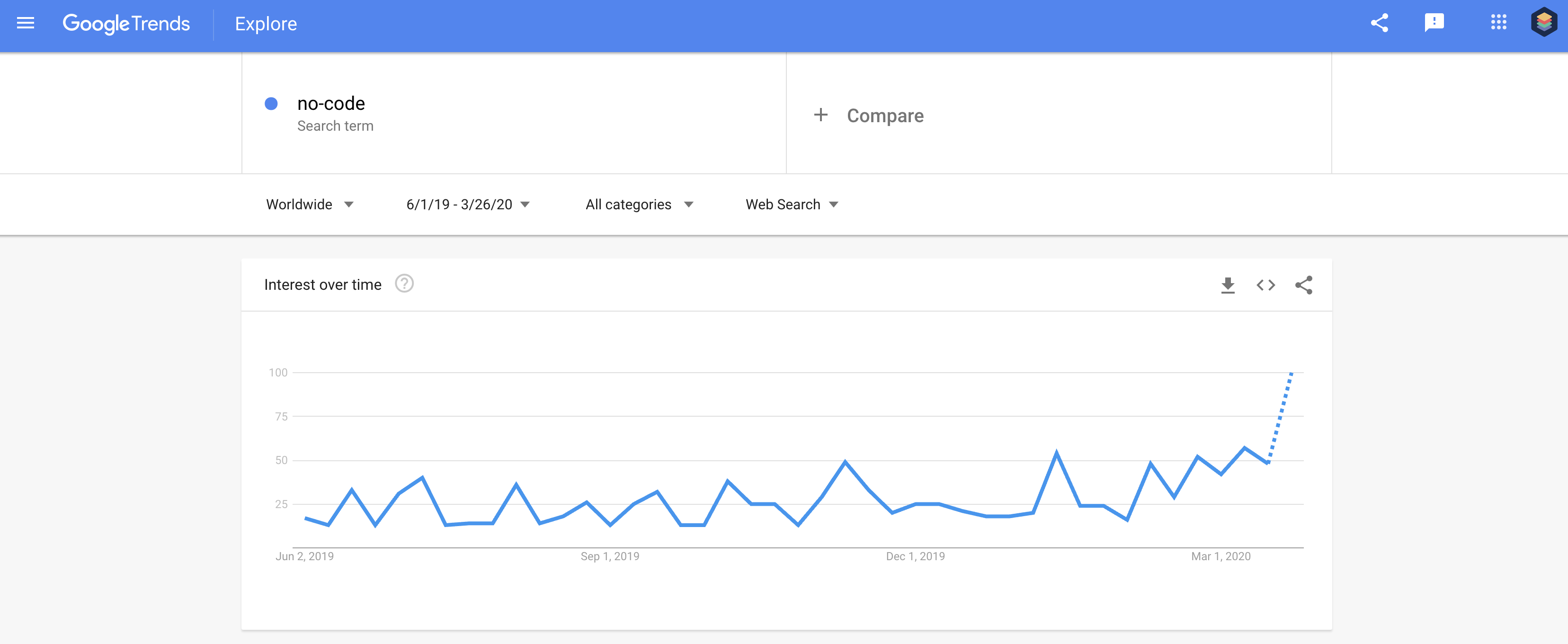No-Code Operating Systems for Open System Data Source Development: Conserve Time and Resources
No-Code Operating Systems for Open System Data Source Development: Conserve Time and Resources
Blog Article
Exploring the Advantages of Scalable Databases That Require No Coding Skills for Efficient Data Management Solutions
The development of scalable databases that remove the need for coding abilities offers a transformative possibility for organizations looking for reliable data administration options. As we consider the ramifications of such developments, it ends up being vital to analyze how they can reshape the landscape of data administration and drive lasting development in a competitive setting.
Improved Availability for Individuals
Boosted accessibility for customers is a vital aspect of scalable data sources, making sure that information monitoring systems are instinctive and user-friendly. In a period where data-driven decisions are critical, availability enables a wider series of customers, including those without substantial technical expertise, to engage with database systems successfully. This democratization of information accessibility facilitates enhanced partnership throughout divisions, empowering staff members to extract insights and make informed choices.
Straightforward interfaces, such as visual information and drag-and-drop functions depiction, streamline intricate information interactions. These enhancements minimize the understanding contour related to conventional data source monitoring, enabling individuals to concentrate on leveraging information instead of coming to grips with technological intricacies. Scalable databases frequently include real-time analytics and customizable dashboards, providing users with prompt understandings customized to their specific needs.

Cost-Effectiveness and Resource Financial Savings
Efficient data management not just rests on accessibility but likewise on cost-effectiveness and source savings. Scalable data sources designed for users with no coding skills dramatically lower monetary concerns normally associated with conventional data source administration systems. By removing the demand for specialized programming experience, companies can assign their resources more effectively, focusing funds on core organization activities as opposed to comprehensive training or employing skilled personnel.
Additionally, these data sources frequently utilize cloud-based solutions, which even more decrease expenses connected to equipment and upkeep. Organizations can scale their database services according to their demands, staying clear of the expenditures incurred from over-provisioning sources. This flexibility implies businesses can adapt to altering needs without incurring unneeded expenses, bring about substantial long-term financial savings.
Furthermore, user-friendly interfaces simplify data entry and administration processes, reducing the time invested in management tasks. This efficiency equates into labor price financial savings, enabling groups to concentrate on tactical efforts as opposed to routine upkeep. In general, embracing scalable data sources that call for no coding skills fosters a much more economical technique to information monitoring, making it possible for companies to maximize their resources while maintaining high degrees of operational effectiveness.
Improved Cooperation Throughout Teams

Furthermore, scalable data sources assist in smooth interaction amongst staff member. With user-friendly user interfaces that require no coding abilities, workers can quickly create, change, and share records or control panels tailored to their details requirements. This democratization of data empowers non-technical customers to add insights, boosting the collective environment.
Furthermore, these data sources support concurrent accessibility, allowing several users to service the exact same dataset concurrently. This attribute improves performance, as teams can engage in joint information evaluation without the risk of version control problems. The ability to leave notes or remarks straight within the database better promotes discussion and makes clear data analyses.
Streamlined Data Management Processes
In today's data-driven atmosphere, companies identify the necessity of structured information administration processes to take full advantage of efficiency and accuracy. By leveraging scalable company website databases that require no coding skills, businesses can streamline their data handling and minimize the complexities normally connected with typical database systems. This accessibility encourages non-technical customers to engage straight with data, promoting quicker decision-making and reducing reliance on specialized IT personnel.
Streamlined information administration processes boost process by top article automating regular jobs such as information access, validation, and reporting. Automated data assimilation guarantees that information from different sources is accumulated seamlessly, getting rid of silos and cultivating a combined view of crucial business metrics (no-code). Moreover, user-friendly user interfaces allow employees to control data quickly, allowing them to create understandings that drive critical efforts without the need for comprehensive training.
This performance not just increases functional processes but also decreases the possibility for human mistake, ensuring that data continues to be trustworthy and accurate. Ultimately, structured information administration processes through scalable databases cause improved productivity, enabling organizations to concentrate on core activities while making sure that their information administration methods are effective and efficient.
Scalability for Expanding Businesses

For increasing ventures, the ability to scale up or down is essential. A scalable database can handle an influx of data generated from new customers, items, or services, making certain that service procedures stay continuous. These data sources give the ability to manage peak loads successfully, which is essential throughout periods of fast growth or seasonal spikes.
In addition, lots of scalable database services are made with easy to use user interfaces that call for no coding abilities, empowering non-technical personnel to handle data properly (no-code). click to investigate This democratization of data administration enables organizations to allocate sources tactically and decrease dependency on specialized IT personnel
Ultimately, taking on a scalable database not only enhances functional efficiency but likewise cultivates an environment where services can introduce and progress without the restrictions of traditional database systems. This flexibility placements organizations for long-term success in today's competitive landscape.
Verdict
In verdict, scalable databases that need no coding skills supply significant advantages for efficient data monitoring. By simplifying data monitoring procedures and using scalability for growing businesses, such solutions make it possible for organizations to adapt to transforming demands effectively.
Boosted accessibility for customers is a critical facet of scalable data sources, making certain that data administration systems are instinctive and straightforward.Easy to use user interfaces, such as visual data and drag-and-drop features representation, simplify intricate information communications. Overall, embracing scalable data sources that require no coding abilities fosters an extra cost-effective approach to data management, allowing organizations to optimize their sources while preserving high levels of functional effectiveness.
By leveraging scalable databases that call for no coding abilities, organizations can simplify their data handling and reduce the complexities normally linked with typical database systems - no-code.Structured data management procedures enhance process by automating regular tasks such as information entry, validation, and coverage
Report this page